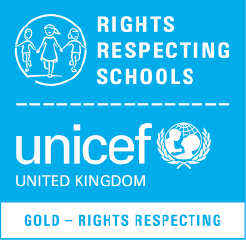- Home
- Learning
- Phonics & Early Reading
Phonics & Early Reading
Phonics
At Seymour Park we use Little Wandle Letters and Sounds Revised to teach phonics and early reading. This programme has a systematic progression which begins in Reception and continues until the end of Year 1. Some children will need to continue this into Year 2 and beyond in order to become fluent and confident readers. An overview of the five phases is shown below. There is also a more detailed termly overview.
Programme-Overview-Reception-and-Year-1.pdf
Reception-Autumn-1-Phase-2-Pronunciation-Guide.pdf
Reception-Autumn-2-Phase-2-Pronunciation-Guide.pdfReception-Spring-How-to-say-Phase-3-sounds.pdfYear-1-How-to-say-the-Phase-5-sounds.pdfCapital-letter-formation.pdf
Tricky Words
Here are some useful guides which explain why some words are 'tricky'.
Tricky-words-for-parents-Phase-2-1-1.pdfTricky-words-for-parents-Phase-3-1-1.pdfTricky-words-for-parents-Phase-4.pdfTricky-words-for-parents-Phase-5.pdf
More information and helpful guides for parents can be found on the Little Wandle Letters and Sounds Revised website. Here is the link;
https://www.littlewandlelettersandsounds.org.uk/resources/for-parents/
Supporting your child with reading
Although your child will be taught to read at school, you can have a huge impact on their reading journey by continuing their practice at home.
There are two types of reading book that your child may bring home:
A reading practice book. This will be at the correct phonic stage for your child. They should be able to read this fluently and independently.
A sharing book. Your child will not be able to read this on their own. This book is for you both to read and enjoy together.
Reading practice book
This book has been carefully matched to your child’s current reading level. If your child is reading it with little help, please don’t worry that it’s too easy – your child needs to develop fluency and confidence in reading.
Listen to them read the book. Remember to give them lots of praise – celebrate their success! If they can’t read a word, read it to them. After they have finished, talk about the book together.
Sharing book
In order to encourage your child to become a lifelong reader, it is important that they learn to read for pleasure. The sharing book is a book they have chosen for you to enjoy together.
Please remember that you shouldn’t expect your child to read this alone. Read it to or with them. Discuss the pictures, enjoy the story, predict what might happen next, use different voices for the characters, explore the facts in a non-fiction book. The main thing is that you have fun!
LS-Parent-handout-Reception-Autumn-term-Sep-23-1.pdfLS-Parent-handout-Year-1-Sep-23-1.pdf
Parent-Workshop-Phonics-Sep-2023-RA.pptx
LS-KEY-GUIDANCE-GLOSSARY-1.pdf
Here is a video explaining the changes to the way we teach phonics and early reading at Seymour Park.
|
Phase |
Phonic Knowledge and Skills |
|---|---|
|
Phase One (Nursery/Reception) |
Activities are divided into seven aspects, including environmental sounds, instrumental sounds, body sounds, rhythm and rhyme, alliteration, voice sounds and finally oral blending and segmenting. |
|
Phase Two (Reception) up to 6 weeks |
Learning 19 letters of the alphabet and one sound for each. Blending sounds together to make words. Segmenting words into their separate sounds. Beginning to read simple captions. |
|
Phase Three (Reception) up to 12 weeks |
The remaining 7 letters of the alphabet, one sound for each. Graphemes such as ch, oo, th representing the remaining phonemes not covered by single letters. Reading captions, sentences and questions. On completion of this phase, children will have learnt the "simple code", i.e. one grapheme for each phoneme in the English language. |
|
Phase Four (Reception) 4 to 6 weeks |
No new grapheme-phoneme correspondences are taught in this phase. Children learn to blend and segment longer words with adjacent consonants, e.g. swim, clap, jump. |
|
Phase Five (Throughout Year 1) |
Now we move on to the "complex code". Children learn more graphemes for the phonemes which they already know, plus different ways of pronouncing the graphemes they already know. |
|
Year 2 |
Working on spelling, including prefixes and suffixes, doubling and dropping letters etc. |



